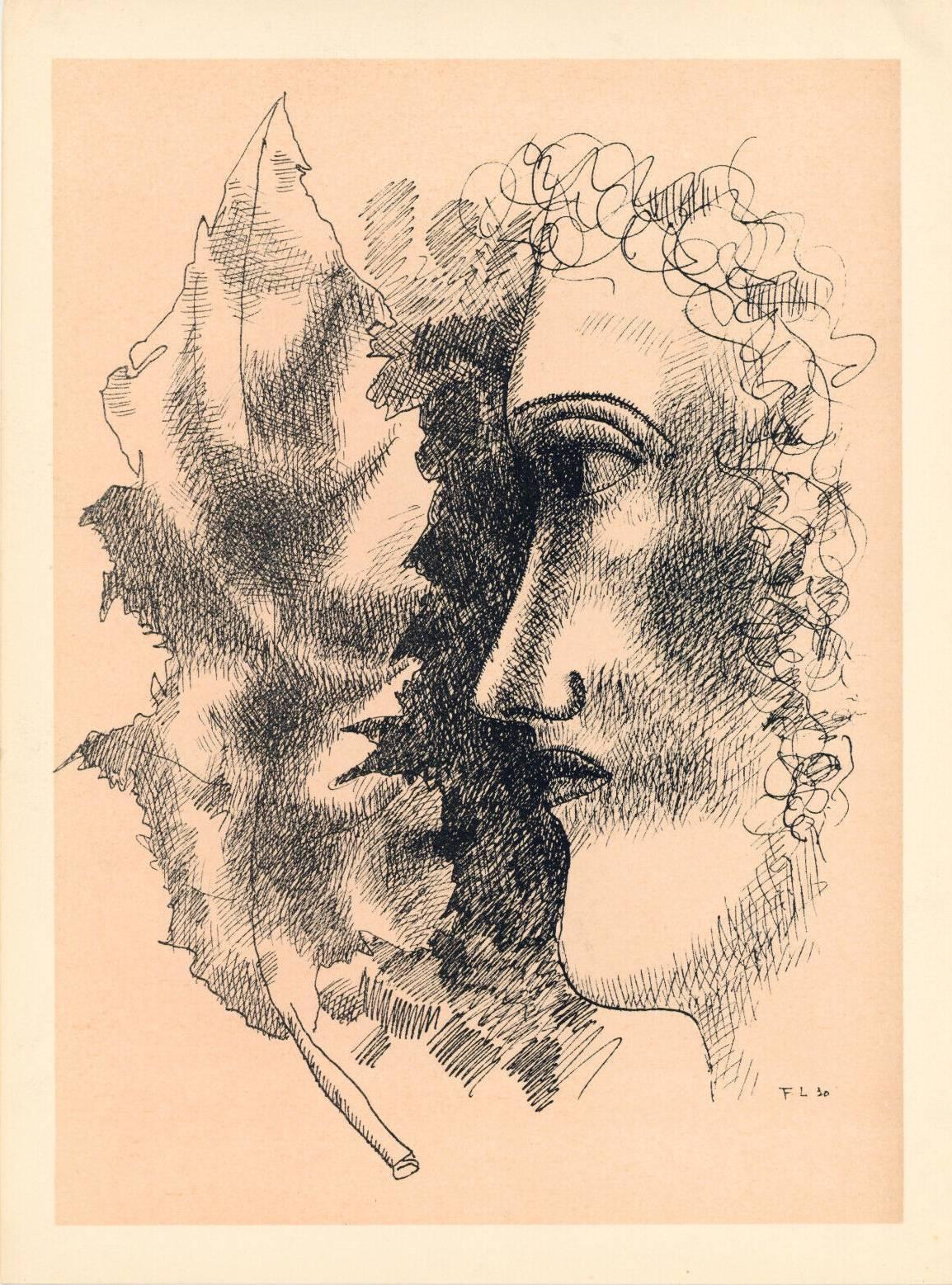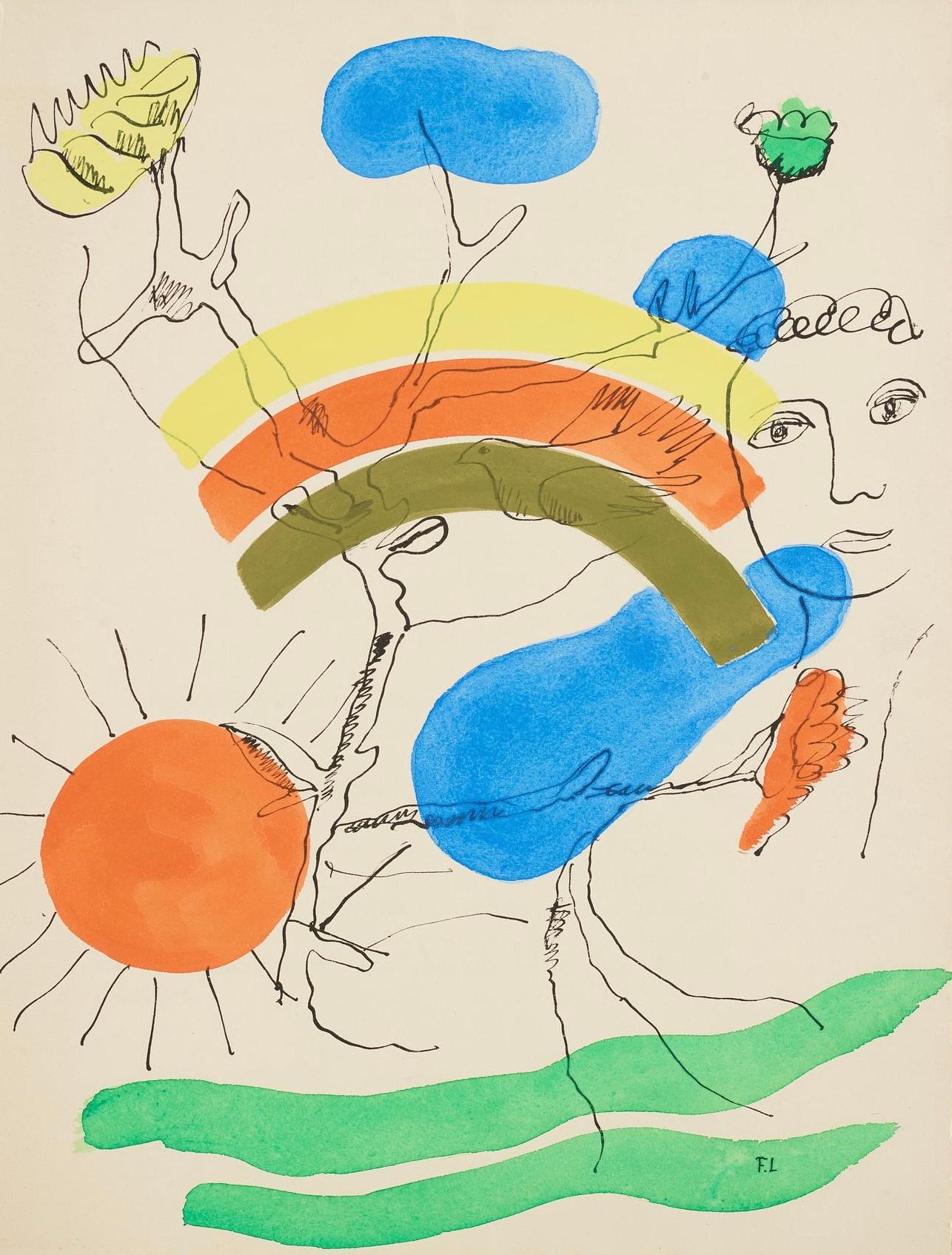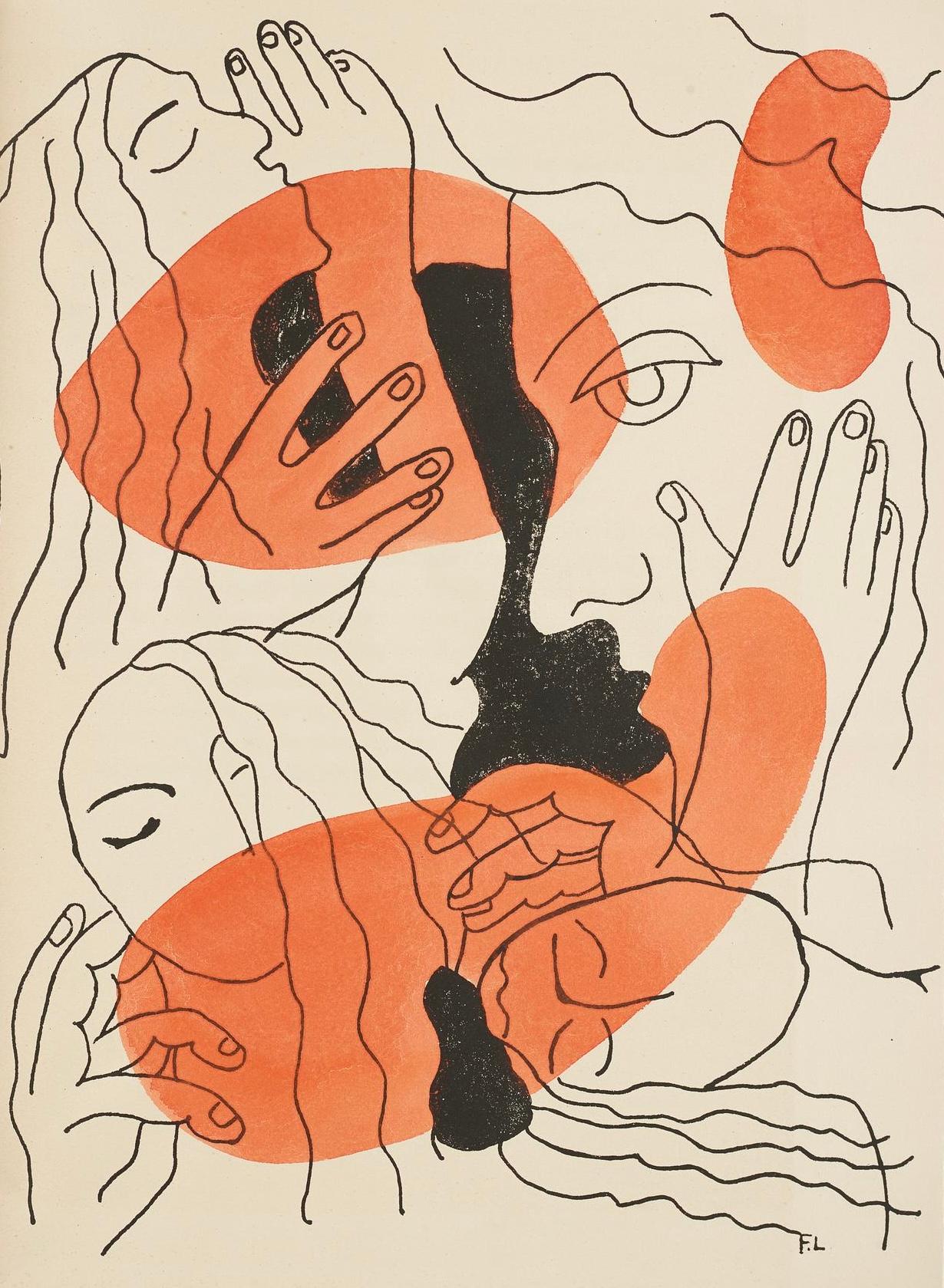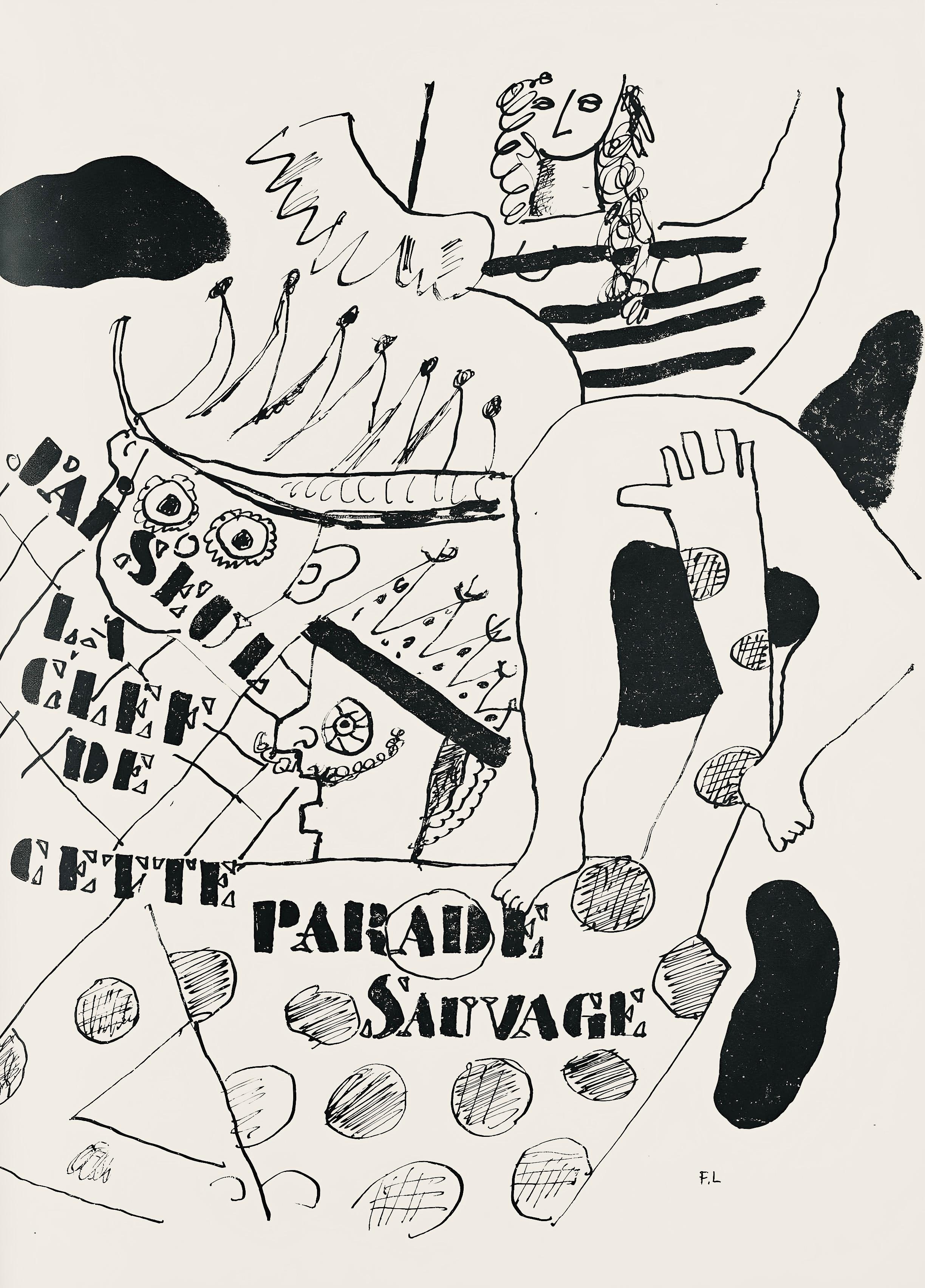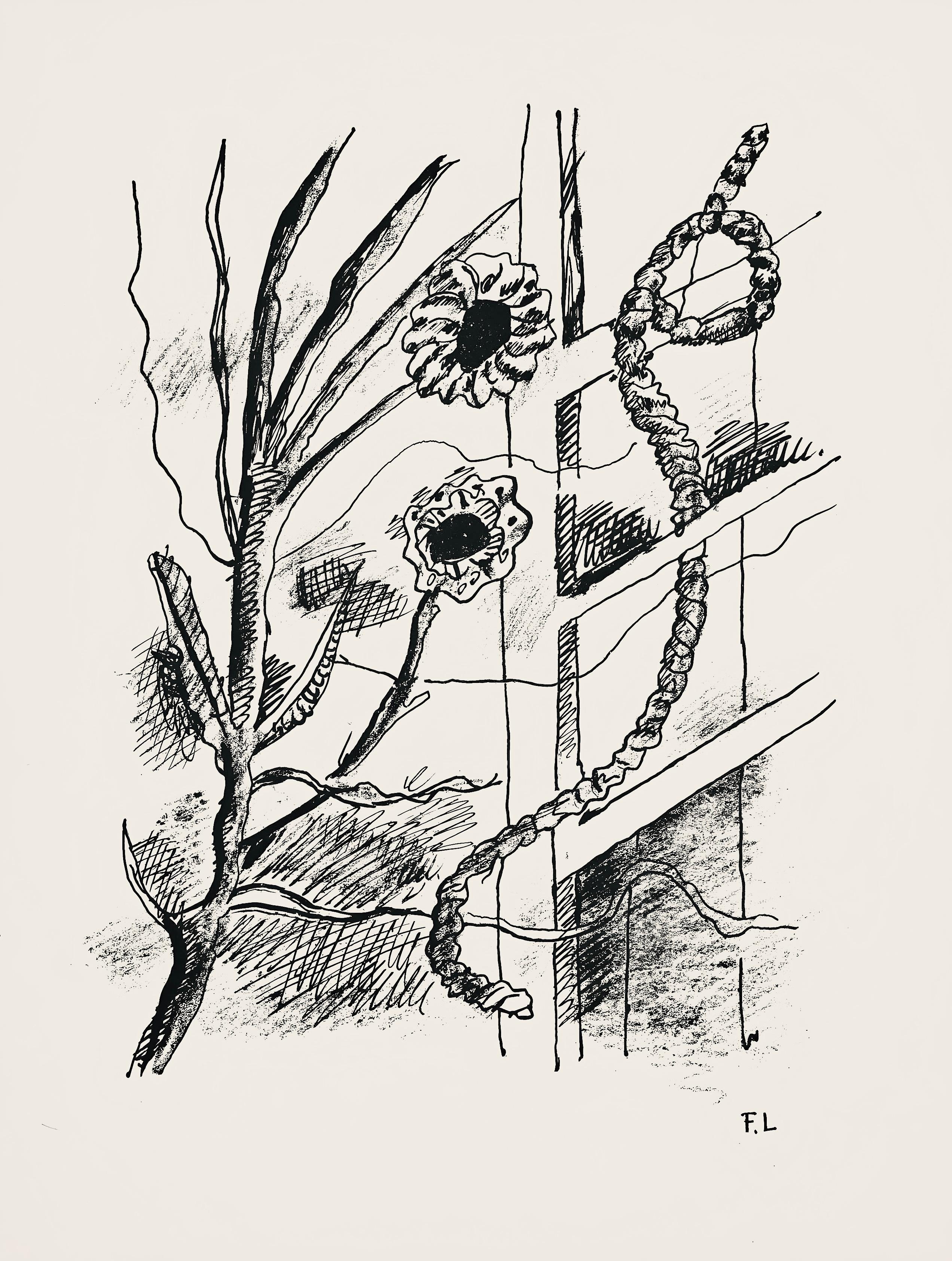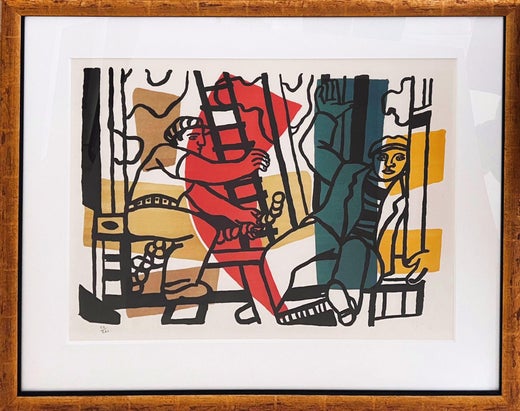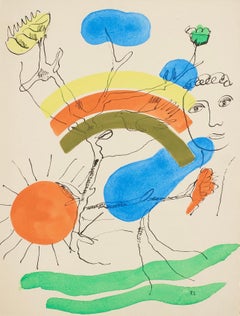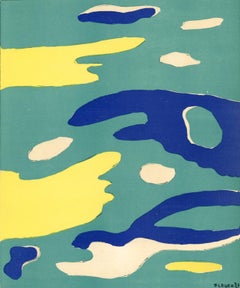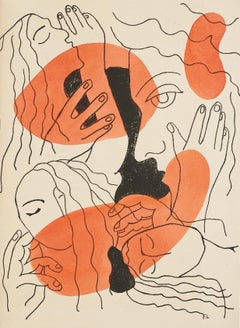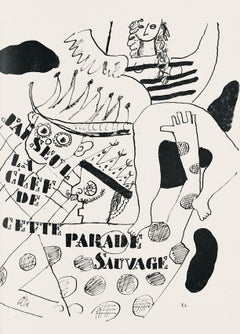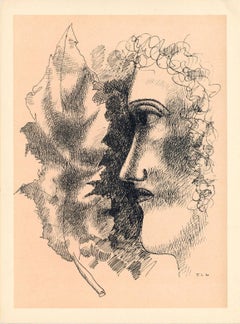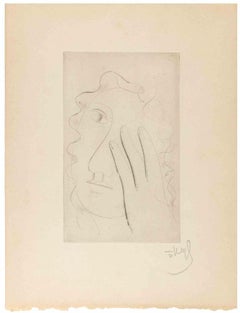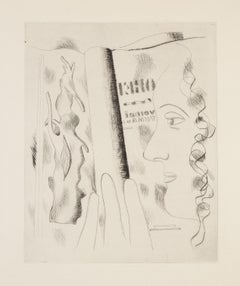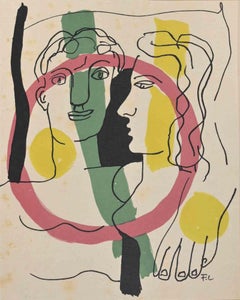Lithograph on vélin des Papeteries du Marais paper. Paper Size: 14 x 10.25 inches. Inscription: Signed in the plate and unnumbered, as issued. Notes: From the album, Verve: Revue Artistique et Littéraire, Vol. II, N° 5-6, 1939. Published by Éditions de la revue Verve, Paris, under the direction of Tériade, éditeur, Paris; printed by Mourlot Frères, Paris, 1939 in an edition of MM. Additional notes: Excerpted from Poppy Sfakianaki, ‘La revue Verve (1937–60): Un tremplin pour la carrière de Tériade dans les éditions d’art’, Journal of European Periodical Studies, 4.2 (Winter 2019), 70–89, In 1937, Tériade (1897-1983) met David Smart (1892-1952), the American publisher of Esquire magazine, who offered him to the opportunity to collaborate on the creation of 'the most beautiful magazine in the world'. Smart recognized in Tériade not only his ability as a publisher and knowledge of art history, but also his professional network and the name he made for himself in the Parisian art world—all crucial advantages for an editorial business. Having had the commercial conviction that beauty "sells", Smart intended to address the American public, attracted to French art, including Modern art, and the myth of artistic life in Paris. For his part, Tériade saw the proposed collaboration as an opportunity for a foray into the American market—a powerful ally of modern art in France. Éditions de la Revue Verve was founded in November 1937, largely funded by Smart, and directed by Tériade. Verve: Revue Artistique et Littéraire was a luxurious and ambitious art publication, published not only in French, but also in English in its early years, and distributed in Europe and the United States. Its configuration was reminiscent of that of the French art journals Cahiers d'art, Minotaure, and Arts et métiers graphiques, as well as that of the American art magazine, Coronet. However, Verve was superior to the competition because of its copious iconography and high printing quality. Its price varied between 60 and 150 francs (for double numbers) before the war, and between 120 and 350 francs during the war. Given its high price, the magazine mainly targeted art dealers, collectors, bibliophiles and wealthy art lovers. The exquisite aesthetics of the magazine was due to its editor-in-chief, Tériade, who sought to develop a platform for dialogue between image and text, visual arts and literature. The dominant factor of each issue remains its iconography, composed of reproductions of works by modern artists that Tériade admired, and 'masters', mainly of the French tradition, alongside photos and miniatures of medieval manuscripts. Tériade undoubtedly realized with his magazine an idea expressed in 1934 according to which books served as an 'ideal museum' or an exhibition where all the artistic masterpieces are gathered, which Malraux developed later in Le Musée imaginaire (Geneva: Skira, 1947), parts of which will appeared in Verve. During Second World War the periodicity of the journal changed, then irregular, and the less varied nature of the subjects treated. Thus, the issues published during the War (as well as in 1945 and 1946) were devoted exclusively to the reproduction of medieval illuminations. Finally, the special issues of the post-war period each present the recent production of a modern art painter. Only numbers 8 (1940) and 27-28 (1952) were an exception with a more varied summary. Verve's reception was positive as evidenced by several laudatory press articles throughout its run. The success of the magazine, Tériade's passion for modern art and medieval manuscripts, his admiration for the publications of Ambroise Vollard and Albert Skira, and his knowledge of the world of bibliophiles, soon led him to amplify his editorial activity. In 1943, despite the practical difficulties imposed by the war, his first artist's book was published, written and illustrated by Georges Rouault. Until 1975, Tériade published Éditions de la Revue Verve, nine books by modern artists, such as Henri Matisse, Pablo Picasso, Marc Chagall, Joan Miró, entirely composed (text and images) by the artists; seventeen books illustrated by recognized modern artists; an album of lithographs by Fernand Léger on Paris; two photographic albums by Henri Cartier-Bresson; two monographs on the artists André Beaudin and Francisco Borès; a luxurious series of reproductions of medieval illuminations; and, a series of portfolios on great French architecture. Ultimately, the comparative study of the journal and the editions of Verve: Revue Artistique et Littéraire illustrates the importance of the tacit relational dynamic that results from the relations of collaboration and exchange of symbolic capital based on common perceptions and interests, as well as on feelings of mutual friendship and appreciation of actors in the art world who share a visual and bibliophilic culture and thus contribute to the success of the journal and the publishing house.
FERNAND LEGER (1881-1955) was a French painter, sculptor, and filmmaker. In his early works he created a personal form of cubism (known as "tubism") which he gradually modified into a more figurative, populist style. His boldly simplified treatment of modern subject matter has caused him to be regarded as a forerunner of pop art. Léger was born in Argentan, Orne, Lower Normandy, where his father raised cattle. Fernand Léger initially trained as an architect from 1897 to 1899, before moving in 1900 to Paris, where he supported himself as an architectural draftsman. After military service in Versailles, Yvelines, in 1902–1903, he enrolled at the School of Decorative Arts after his application to the École des Beaux-Arts was rejected. He nevertheless attended the Beaux-Arts as a non-enrolled student, spending what he described as "three empty and useless years" studying with Gérôme and others, while also studying at the Académie Julian. He began to work seriously as a painter only at the age of 25. At this point his work showed the influence of impressionism, as seen in Le Jardin de ma mère (My Mother's Garden) of 1905, one of the few paintings from this period that he did not later destroy. A new emphasis on drawing and geometry appeared in Léger's work after he saw the Cézanne retrospective at the Salon d'Automne in 1907. In 1909, he moved to Montparnasse and met Alexander Archipenko, Jacques Lipchitz, Marc Chagall, Joseph Csaky and Robert Delaunay. In 1910, he exhibited at the Salon d'Automne in the same room (salle VIII) as Jean Metzinger and Henri Le Fauconnier. In his major painting of this period, Nudes in the Forest, Léger displays a personal form of Cubism that his critics termed "Tubism" for its emphasis on cylindrical forms. In 1911, the hanging committee of the Salon des Indépendants placed together the painters identified as 'Cubists'. Metzinger, Albert Gleizes, Le Fauconnier, Delaunay and Léger were responsible for revealing Cubism to the general public for the first time as an organized group. The following year he again exhibited at the Salon d'Automne and Indépendants with the Cubists, and joined with several artists, including Le Fauconnier, Metzinger, Gleizes, Francis Picabia and the Duchamp brothers, Jacques Villon, Raymond Duchamp-Villon and Marcel Duchamp to form the Puteaux Group—also called the Section d'Or (The Golden Section) paintings, from then until 1914, became increasingly abstract. Their tubular, conical, and cubed forms are laconically rendered in rough patches of primary colors plus green, black and white, as seen in the series of paintings with the title Contrasting Forms. Léger made no use of the collage technique pioneered by Braque and Picasso.
